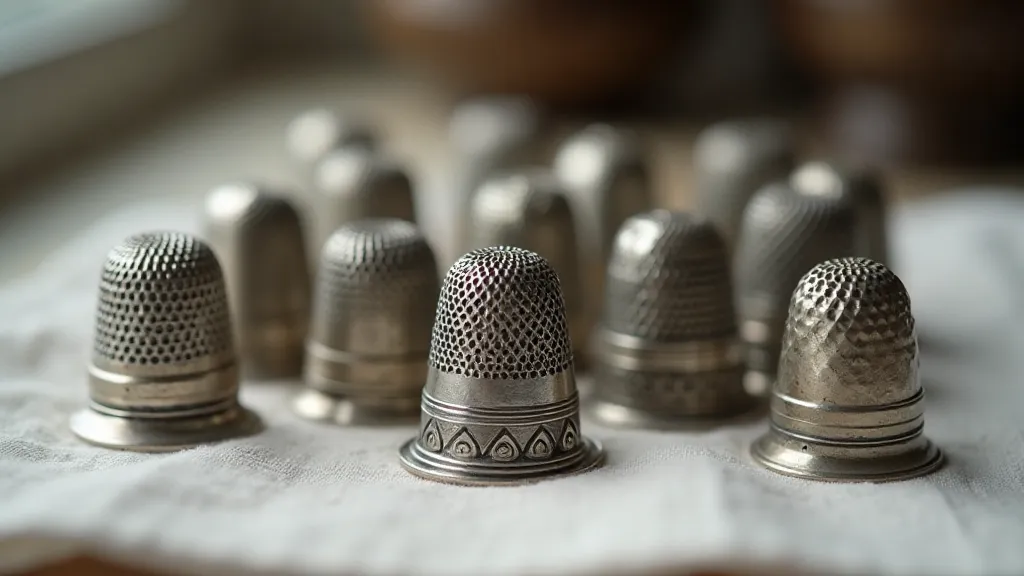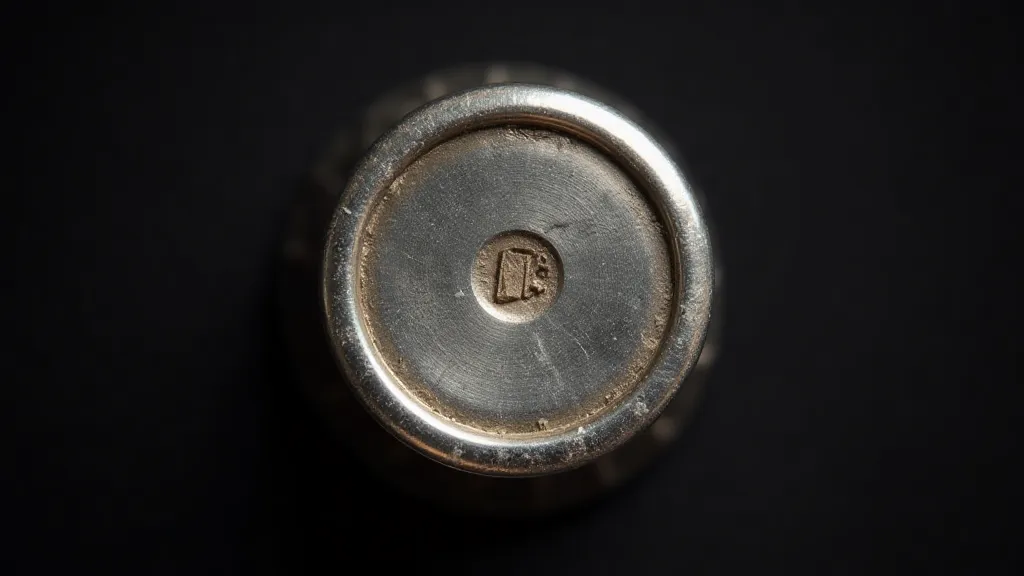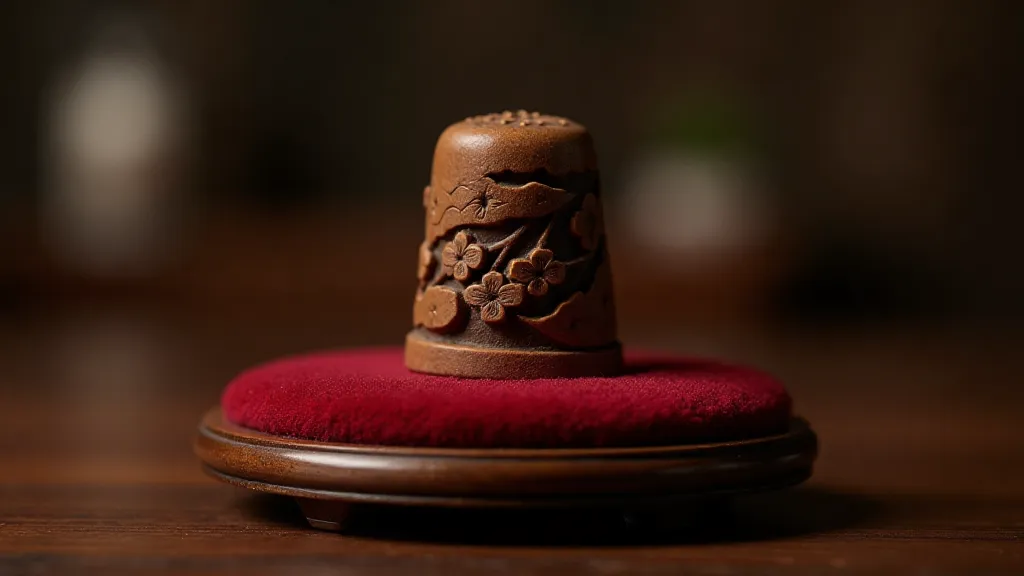Echoes in Silver: The Silent Narratives of Forgotten Hands
They’re small, often overlooked, relegated to dusty corners of antique shops or inherited from grandmothers we barely remember. But vintage thimbles – those tiny shields against pricked fingers – hold within them a quiet history, a whisper of countless hours spent hunched over fabric, of families gathered, of lives lived with purpose and precision. To hold a vintage thimble is to connect, however fleetingly, with the hands that crafted it and the hands that wielded it, feeling the echoes of a world subtly, beautifully different from our own.
We often think of grand, sweeping historical events, the battles and treaties that shape nations. But the true texture of history lies in the everyday: the meals prepared, the clothes mended, the homes built, and yes, the simple act of sewing. Thimbles, unassuming as they are, were essential to this essential act, and their evolution reflects the broader story of craftsmanship, societal change, and technological advancement. Consider for a moment the dedication and skill involved in these tasks. The story behind a single thimble can often unlock a fascinating glimpse into a life lived, prompting one to imagine the ghost of the seamstress and the legacy she left behind.

The Early Years: From Bone to Horn
The earliest evidence of thimbles dates back to ancient Egypt, with bone and leather coverings protecting fingers. These weren’t the elegant, ornamental pieces we associate with the Victorian era. They were functional necessities, born out of the inherent challenges of hand sewing. Throughout the Middle Ages, materials varied according to availability and wealth – horn, wood, and even baked clay were used. The arrival of metalworking, particularly the development of cast brass and pewter, marked a significant step, allowing for more intricate shapes and decorative elements. The artistry that went into even these simpler metalworking techniques is a testament to the ingenuity of the time, demonstrating how artisans took pride in even the most basic of tools. The conversion of raw materials into useful objects – a process akin to the alchemy of stitch – was a mark of skill and a source of both pride and livelihood.
Imagine the women of these generations, the mothers and grandmothers who relied on these rudimentary protectors. Their lives were often harsh, filled with labor and responsibility. The simple act of mending a garment, of creating clothes for a family, was a vital contribution, a skill passed down through generations. The thimble was their faithful companion, a small, sturdy symbol of resilience and resourcefulness. Think of the techniques they mastered, the subtle shifts in design that improved functionality and aesthetics.
The Silver Age: Victorian Ornamentation
The 18th and 19th centuries ushered in the “silver age” of thimble production. The Industrial Revolution, while bringing many societal upheavals, also fueled advancements in metalworking. Silver became increasingly accessible, and the burgeoning middle class embraced the opportunity to acquire beautiful, decorative objects. Suddenly, thimbles weren't just functional; they were status symbols, heirloom pieces.
Victorian thimbles are often characterized by their exquisite detail. Floral motifs, intricate scrollwork, personalized inscriptions – these weren’t accidents. They were deliberate expressions of artistry and sentimentality. Families would commission thimbles engraved with initials, dates, or small family crests, transforming a humble sewing accessory into a cherished keepsake. Think of a young woman, newly betrothed, receiving a silver thimble engraved with her initials and those of her future husband – a small token of love and commitment, intended to last a lifetime. The increasing sophistication of these designs often reflected a growing awareness of regional and international artistic trends – a fascinating intersection of craft and cultural exchange.
The rise of mass production also played a role. While handcrafted thimbles remained desirable, the ability to produce them on a larger scale made them more affordable, democratizing a small piece of elegance. Even the less elaborate stamped silver thimbles held a certain charm, reflecting a widespread appreciation for beauty and craftsmanship.
Materials and Markings: Deciphering the Clues
Identifying antique thimbles requires a keen eye for detail. The material is the first clue. While silver is common, you’re also likely to find brass, pewter, nickel silver (an alloy of nickel, copper, and zinc), and occasionally, gold. Brass thimbles are usually heavier and have a warmer tone than silver. Pewter is darker and often has a more matte finish.
Hallmarks – tiny stamps indicating the maker and sometimes the year of production – are incredibly valuable for dating and authenticating thimbles. However, not all thimbles were hallmarked, particularly those produced by smaller workshops. The absence of a hallmark doesn't necessarily mean the thimble isn’t antique; it simply means tracing its origin is more challenging. A more thorough investigation might involve considering regional styles and understanding how these variations arose.
Examining the wear patterns can also provide insights. Heavily worn edges suggest the thimble saw considerable use. The presence of tarnish, though unsightly, is a sign of age. Be aware, however, that excessive polishing can remove traces of genuine patina and potentially diminish the thimble’s value.

Beyond Silver: Unique Forms and Regional Styles
While silver thimbles dominate the antique market, exploring beyond the norm can reveal fascinating discoveries. Bone thimbles, particularly those with elaborate carvings, are prized by collectors. Needlepoint thimbles – small, rounded thimbles designed to fit snugly on the finger while working on delicate needlework – are another sought-after variety.
Regional styles also offer clues to a thimble’s origin. German thimbles, for example, often feature distinctive floral designs, while French thimbles may display a more refined, Art Nouveau aesthetic. Japanese thimbles, often made of lacquered wood or porcelain, showcase intricate scenes from nature or traditional folklore. Understanding these nuances requires appreciating how artistic traditions are adapted and reinterpreted across different cultures – a complex interplay of influence and innovation. The variations in design weren’t merely aesthetic; they often reflected the specific needs and working practices of different sewing communities.
Preserving the Legacy: Care and Collection
Collecting antique thimbles isn't just about acquiring pretty objects; it’s about safeguarding a tangible link to the past. Proper care is essential for preserving their beauty and value. Avoid harsh chemicals and abrasive cleaners. Gentle polishing with a soft cloth can remove surface tarnish, but be careful not to remove the underlying patina.
Storing thimbles individually, wrapped in soft cloth or housed in a dedicated display case, protects them from scratches and tarnish. Consider climate control to prevent moisture damage. Research is key – understanding the history and craftsmanship behind each thimble deepens the appreciation for these tiny treasures. The study of these objects can illuminate not only the evolution of sewing techniques but also the broader social and economic forces that shaped the lives of those who used them. The beauty of a collection lies not only in the individual pieces but also in the story they tell together—a layered narrative of artistry, ingenuity, and resilience.

Holding a vintage thimble is like holding a whisper of the past. It’s a connection to the hands that meticulously crafted it and the hands that used it. These aren't simply objects; they are echoes of forgotten lives, small but powerful reminders of the enduring human desire to create, to mend, and to leave a legacy, however subtle, on the fabric of time. It’s a window into the lives of those who came before us, reminding us of the enduring value of skill, craftsmanship, and connection.





